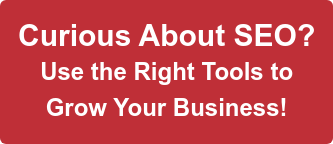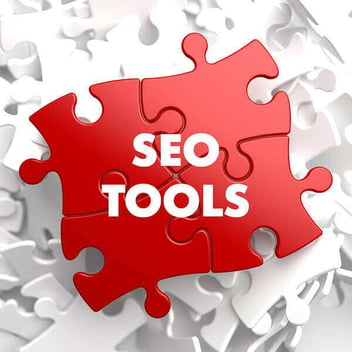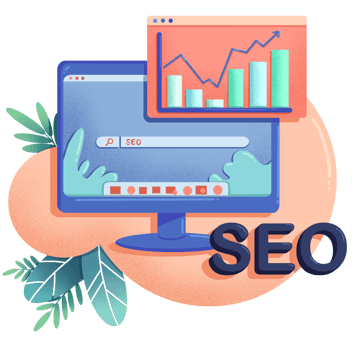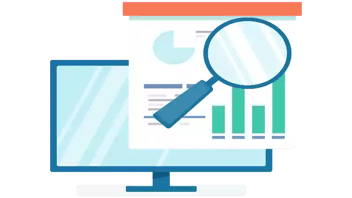SEO Best Practices for 2026: Maximizing Online Visibility
In a world where digital storefronts are the new Main Street, how do you ensure your business isn't just another face in the crowd but a standout destination? This is a critical question for any organization aiming for sustained growth. The answer, increasingly, lies in understanding and mastering search engine optimization, or SEO.
What exactly is SEO? At its core, it's optimizing your online content and technical infrastructure to improve its visibility in search engine results pages (SERPs). But it's not just about algorithms; it’s about connecting your business with the people actively searching for what you offer. In 2026, with the sheer volume of information available online, maximizing your online visibility isn't merely a strategic advantage; it's paramount for business survival and growth. Consider this: organic traffic, which comes from unpaid search results, still accounts for a significant portion of all trackable website traffic— over 53%, according to BrightEdge. What does that mean for your potential reach if you're not optimized? You're leaving a substantial audience on the table.
This guide will explore the essential SEO best practices for 2026, from strategic content creation to crucial technical refinements. We aim to help you understand how these practices can help you rank higher, attract visitors, and ultimately, win customers.
The Foundation: Understanding the Search Engine Ecosystem
To excel at SEO, we must first grasp how search engines operate. Think of search engines as incredibly sophisticated librarians. They don't just find books; they understand the meaning of the words within them, how those books relate to other books, and which ones are most relevant to a specific query.
Their process involves three main stages:
-
Crawling: Search engine bots, or "spiders," systematically explore the internet, discovering new and updated web pages.
-
Indexing: The information gathered during crawling is then analyzed and stored in a massive database, ready to be retrieved.
-
Ranking: When you type a query into a search engine, it quickly sifts through its index to find the most relevant, high-quality content, and then ranks those results based on hundreds of factors.
This process is constantly evolving. Machine learning and artificial intelligence (AI) are continuously refining search results for users, making traditional, simplistic tactics like "keyword stuffing" obsolete. Modern SEO is about genuine value.
The User's Journey: Intent is King
Beyond simply matching keywords, search engines are increasingly sophisticated at understanding user intent. What are users truly looking for when they type a query? Are they seeking information, buying something, or trying to find a specific website? Satisfying this user intent is fundamental to achieving high rankings. For instance, searching for "best running shoes" implies research and comparison, while "buy Nike running shoes size 10" indicates transactional intent.
It's also worth noting how dynamic user needs can be. A study found that 15% of daily Google searches are for new queries. This highlights a continuously shifting landscape of user curiosity and demands, underscoring the need for adaptable and insightful search engine optimization strategies.
Content Performance: Your Digital Voice
If search engines are the librarians, your content is the book. And in 2026, the quality and relevance of your book matter more than ever.
Quality Over Quantity (and Smart Quantity)
Creating valuable, authoritative, and trustworthy content remains the cornerstone of any successful SEO strategy. Google, in particular, prioritizes content that meets its E-E-A-T criteria: Experience, Expertise, Authoritativeness, and Trustworthiness. This means your content should demonstrate genuine insight, be backed by verifiable information, and come from a credible source.
Have you noticed that many top-ranking articles are often quite comprehensive? There's a reason for that. Long-form content, on average, tends to perform better in search results because it often provides more in-depth answers and covers a topic more thoroughly, signaling greater value to both users and search engines.
Strategic Keyword Integration
It is crucial to move beyond single, isolated keywords. Today, SEO success hinges on building topical authority and employing semantic SEO. This means creating content that covers a subject comprehensively, with search engines understanding the relationships between words and phrases, not just exact matches.
Consider the power of long-tail keywords – these are longer, more specific phrases that users type into search engines. While they might have lower individual search volumes, they often attract highly qualified traffic. For example, a local business aiming to win customers might target "best vegan restaurants in Toronto with outdoor seating" rather than just "vegan restaurants." The more specific query indicates a much clearer intent. Uncovering these valuable phrases is where keyword research tools become indispensable, helping you find precisely what your audience is seeking.
Crafting Engaging Content
Even the most informative content won't get read if poorly presented. Readability and structure aren't just for aesthetics; they significantly impact user engagement and, consequently, your content performance. Clear headings (H1, H2, H3), short paragraphs, and bullet points break up text, making it easier to digest. Did you know that Google may rewrite over 61% of meta titles and nearly 63% of meta descriptions? This underscores the need for your on-page content to be compelling and concise, capturing attention even before a user clicks.
Don't underestimate the power of multimedia integration. Images, videos, and infographics aren't just visually appealing; they enhance user engagement. For instance, 68% of videos ranking on the first page of YouTube results are high-definition, highlighting the importance of quality in visual content.
Finally, always guide your visitors. Calls to Action (CTAs) are essential for prompting users towards the next step in their journey, whether it's signing up for a newsletter, downloading a resource, or making a purchase.
Website Optimization: The Technical Backbone
While compelling content draws users in, a robust technical foundation ensures they have a seamless experience and that search engines can efficiently process your site. This is where website optimization truly shines.
Mobile-First Indexing: It's Not Optional Anymore
With the majority of internet users accessing content on their smartphones, a seamless mobile experience is paramount. Google has shifted to mobile-first indexing, meaning it primarily uses the mobile version of your content for indexing and ranking. Mobile search is the primary search location for 52% of all Americans, jumping to 80% for Gen Z. If your site isn't responsive and mobile-friendly, you're not just losing potential visitors; you're actively hindering your online visibility.
Page Speed and Core Web Vitals
Patience is a virtue, but not when it comes to loading times. Slow-loading pages frustrate users and negatively impact your SEO. Google's Core Web Vitals, a set of metrics measuring user experience, are now significant ranking factors. These include:
-
Largest Contentful Paint (LCP): Measures loading performance. An LCP below 2.5 seconds is considered optimal.
-
First Input Delay (FID): Measures interactivity.
-
Cumulative Layout Shift (CLS): Measures visual stability.
Optimizing for these signals ensures a faster, more stable, and more enjoyable experience for your users.
Site Architecture and User Experience (UX)
A well-organized website is a happy website for both users and search engines. A logical site structure helps search engines crawl and index your site effectively, understanding the relationships between different pages.
-
Internal Linking: Creating a robust network of internal links within your site helps distribute ranking power across your pages and improves discoverability. Internal links are crucial to improving your website's overall SEO.
-
External Linking (Outbound Links): Don't be afraid to link to reputable, high-authority external sources. Google's algorithms see linking to authoritative sources as a testament to your content's reliability and research.
Technical SEO Elements
Several technical elements further enhance your site's SEO:
-
HTTPS: Using HTTPS (Hypertext Transfer Protocol Secure) ensures a secure connection for your users, protecting their data. Over 87% of websites currently use HTTPS, making it an industry standard that impacts trust and rankings.
-
XML Sitemaps and Robots.txt: These files guide search engines on how to crawl and index your site most effectively.
-
Structured Data (Schema Markup): Implementing structured data helps search engines understand the context of your content, leading to rich snippets in search results (like star ratings or event details) that can significantly improve click-through rates. Interestingly, over 23% of websites currently use no structured data, representing a missed opportunity for many.
Building Authority: Beyond Your Website
Your own site is just one piece of the puzzle. To truly maximize your online visibility and rank higher, you need to build authority across the web.
Backlinks: The "Votes of Confidence"
Think of backlinks (links from other websites to yours) as "votes of confidence." High-quality backlinks from authoritative and relevant websites remain a critical ranking factor. The more reputable "votes" your site receives, the more trustworthy and authoritative search engines perceive you to be.
Focus on ethical link-building strategies, such as guest blogging on relevant sites, identifying and repairing broken links on other sites that could be replaced with yours, or getting featured on resource pages. Remember, it's about quality over quantity; a few strong backlinks are far more valuable than many low-quality, spammy ones. For perspective, over 66% of backlinks are broken, highlighting the need for vigilance and good practices when both building and maintaining your link profile.
Local SEO: Connecting with Your Community
For businesses with a physical location, local SEO is non-negotiable. The rise of "near me" searches—which have grown 100% year-over-year globally on Google Maps—demonstrates how crucial it is to be visible to local customers.
Optimizing your Google My Business profile is a must-have. Ensure your information is accurate, complete, and regularly updated. Furthermore, encourage and manage online reviews and ratings. Businesses with four or more stars on Google outrank those with lower ratings by a median of 11%, clearly showing the impact of positive customer feedback on local online visibility.
Measurement and Adaptation: The Continuous Cycle of SEO
Search engine optimization is not a "set it and forget it" endeavor. The digital landscape is constantly shifting, and so too must your strategy.
Tracking Your Performance
To gauge the effectiveness of your efforts, you need to monitor key metrics:
-
Organic traffic: The number of visitors coming to your site from search engines.
-
Keyword rankings: Where your pages appear for specific search queries.
-
Bounce rate: The percentage of visitors who leave your site after viewing only one page.
-
Conversion rates: How many visitors complete a desired action (e.g., making a purchase, filling out a form).
Tools like Google Analytics 4, Google Search Console, and various third-party SEO platforms are indispensable for gathering and analyzing this data, providing the insights you need to refine your strategy.
Staying Agile in a Dynamic Landscape
The importance of regular content audits and updates cannot be overstated. Content decays over time, and regular refreshes can breathe new life into older pieces. Adapting to algorithm changes is also critical; SEO is a continuous process of learning and adjusting.
Looking ahead, the role of AI in SEO is only growing. AI influences how search engines rank content, and the ability to craft effective prompts for AI-generated content will become a crucial skill for optimizing for these new realities.
Your Path to Maximized Online Visibility
Maximizing your online visibility in 2026 requires a holistic, integrated approach to SEO. It's about combining meticulous content performance with robust website optimization to ensure you not only rank higher but genuinely serve your audience. By consistently applying these SEO best practices, you'll significantly increase your ability to attract visitors and, crucially, win customers.
While understanding these principles is a powerful start, implementing them effectively requires consistent effort, specialized tools, and often, deep expertise. For businesses looking to truly master their online presence and achieve unparalleled search engine optimization results in 2026 and beyond, partnering with a dedicated expert can make all the difference. This is where a strategic approach and proven track record become invaluable in navigating the complexities of the digital marketing world. Aspiration Marketing stands ready to help you transform your online visibility into tangible business growth.
This content is also available in:
- German: SEO Best Practices für 2026: Maximierung der Online-Sichtbarkeit
- Spanish: Mejores prácticas de SEO para 2026: maximizar la visibilidad en línea
- French: SEO 2026 : Techniques pour optimiser votre visibilité en ligne
- Italian: Migliori pratiche SEO per il 2026: massimizzare la visibilità online
- Romanian: SEO 2026: Maximizarea vizibilității online
- Chinese: 2026 年搜索引擎优化最佳实践:最大限度提高在线可见度

Joachim is a certified HubSpot trainer with over 13 years of experience in content marketing, strategy, website development, and SEO. He has implemented numerous large-scale, international growth marketing programs, including one with UiPath, which grew from a startup to a successful IPO on the NYSE. Joachim has special expertise in multilingual marketing and sales enablement projects, and he uses the latest AI technologies to help our clients.








Leave a Comment